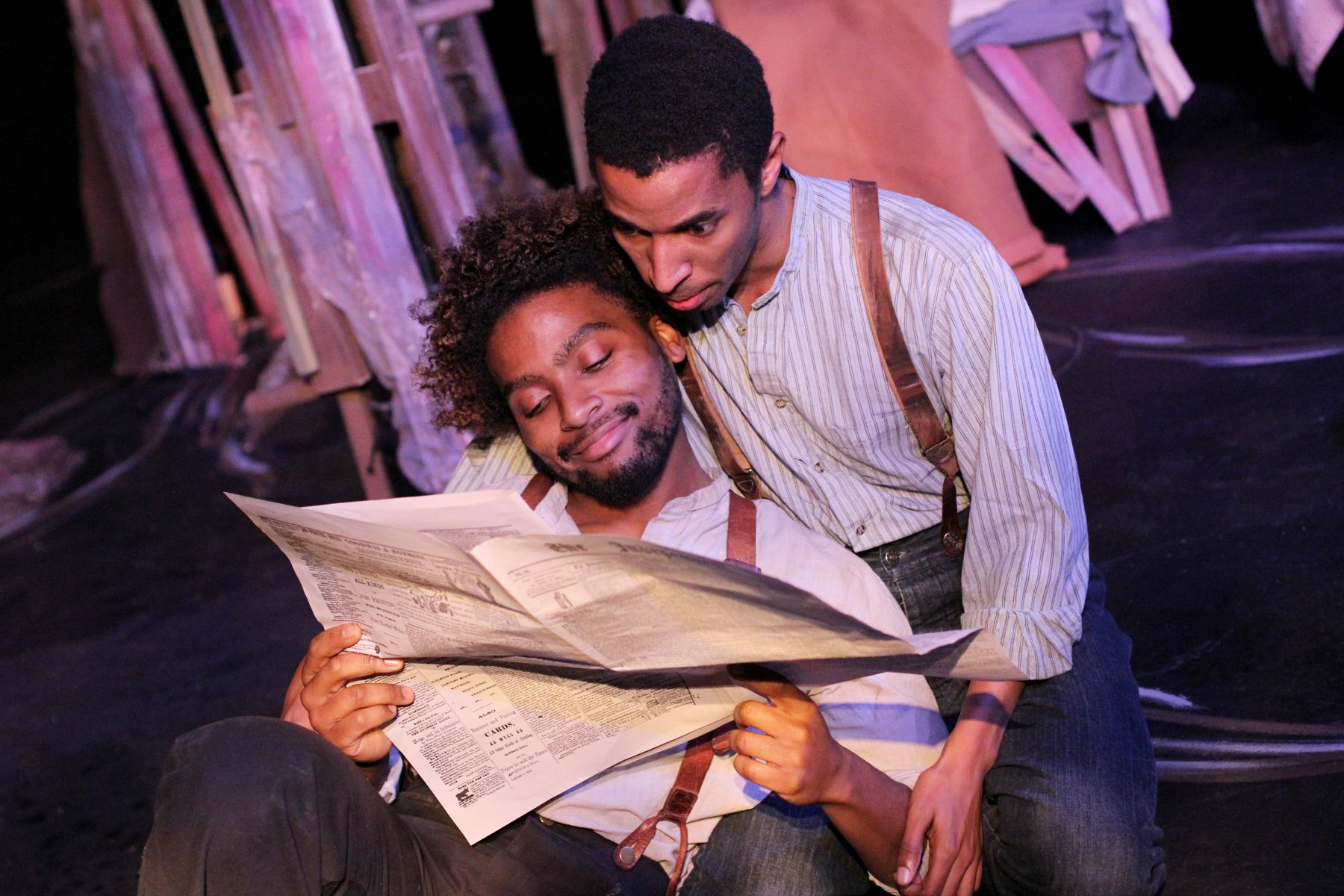Sugar in Our Wounds (Donja R. Love)
One of the most disappointing things in theater, or any story-based medium, is to get to the end of a work and realize that the author was telling a different story than the one you thought. By way of example, Abigail Washbourne’s Mr. Burns, a Post-Electric Play is a play I clicked with immediately, a group of survivors from a national nuclear meltdown gather around a campfire and struggle to remember the plot of a Simpson’s episode, but I was supremely let down by the ending, one hundred years in the future we see that Simpson’s episode play out operatically with a century of embellishment.
It wasn’t Washbourne’s fault that she wanted to tell a story about the role of stories (and religion) and I thought I was watching a story about how survivors bond together through shared fiction, she cared more about the plot, I the characters, and neither got what we wanted out of it.
I feel the same regarding Donja R. Love’s Sugar in Our Wounds, which with all its folklore and fablestic elements is at its core an anodyne love story that thinks it’s more profound than I do.
Notably this play takes place on a southern plantation in the middle of the Civil War. I don’t know of many stories set in that particular place and time where all the pain and tragedy is amplified because you know that a small amount of comfort is just around the corner if they could just hang on (which of course, they can’t.)
I’m calling this a fable, though if it were a little more modern we might say it’s magical realism: there’s a tree that stretches to the heavens and whispers to one of our main characters, there’s a man with skin as dark as the midnight sky, and a woman with skin so yellow to make the sun jealous: there’s magic at the core of this story.
But the main drivers of this work are the twin prejudices of racism and homophobia. We’re on a plantation, and young James is a bright individual who is sensitive and thinks. He’s captured the attention of Isabelle, the daughter of the plantation owner, who teaches James as practice for when she goes off to teach “normal people.” She’s our personification of racism.
James is guided, as are the other slaves on the plantation, by Auntie Mama, an old woman with no children of her own who has likely seen much more and would like to forget most of it if she had the chance. Also on the plantation is Mattie, the presumed daughter of the master of the house who was put into the fields after he forced himself on her, and then the lady of the house treated Mattie to terrible facial scars.
It’s a testament to the play that it never shies away from any of the abhorrent aspects of life as a slave: the disregard Mattie has towards being almost-raped by her father, the casual hatred of Isabelle, the fact that the tree is so big because “every male slave who’s ever worked here has been hung on it”. These things are presented simply and without a lot pomp, because that’s just the way life is. And it’s during these moments that the play really comes alive.
The status quo of life on this plantation is disrupted by the arrival of Henry, a former runaway now sold to this plot of land. He is headstrong, unrepentant, but unable to put his thoughts eloquently. Both Mattie and Isabelle take a liking to him quickly, and both think little of taking him sexually as they see fit, which he is largely stoic about. In short order he creates a friendship, then a romantic relationship with James, as James teaches him how to read, and Henry tries to teach him how to be strong.
Where the play whimpers to me is right at the end: after repelling Isabelle’s advances Henry knows he has to escape, so he has a quick conversation with James before running away, presumably forever. He returns a few months later, having been unable to find peace or his former family, only to find that James has been hung, and everyone is sad, but has taken it on the chin, that’s how life is.
I’m disappointed we don’t see James after Henry runs away. How did he change? Can we see what provoked the hanging? I’m disappointed that James mentions that Mattie treats him differently after learning that Henry prefers James to her, but that we never see it. If the play is about “queer black love,” as the author says, can’t we see more of the prejudices of the time? I’m disappointed too that Mattie just accepts Henry’s sexuality at the end of the play after we’ve been told throughout the last quarter that she’s being outright hostile to James because of it. Maybe months change a person, but I would have wanted to see that.
What began as a magical story about squandered potential due to society’s prejudices ends with a bromide about accepting people as they are. But that’s no one’s fault that I wanted that and Love wanted to give me something else.
As a Producer
I think it goes without saying that this isn’t a Pronoia show: not comedic, doesn’t hit on themes I think are particularly in our wheelhouse, and doesn’t have roles for our usual cohorts.
Would Pronoia ever do a show that centers race? I really don’t know. Lobby Hero feels like our kind of show in some ways, and the background of much of that story is racial.
If Pronoia creates satire it is Horatian not Juvenalian, and most playwrights dealing in race these days want to go straight for the Juvenal.
As a Designer
The magical aspects of this play lend themselves to all manner of exciting design choices. One particular sequence, in which the tree whispers to James the names of all the men hung on it, is a centerpiece which would be thrilling to bring the life. The tree branches are described as growing and moving, I can imagine the soft focused light, and the quiet, considered music.
For costuming you not only have the period clothes, but also the facial scarring on Mattie and trappings of old age on Auntie Mama.
All in all, this show provides ample opportunity for design.
As a Writer
I don’t know that I learned anything as a writer for reading this. It’s good writing, though not easily applicable to what I do.

